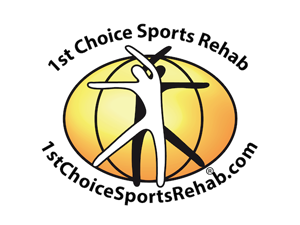Stretching to Prevent Injury
by Hamid L. Sadri, DC, CCSP, ICSSD, CSCS, CKTP, CES, PES
Injury Prevention Part II: Why, When and How to Stretch
Stretching is perhaps one of the most frequently discussed topics with our patients on a daily basis in our practice. There are many schools of thought out there when this question arises. In my 25 years of practice, I have certainly witnessed a great deal of change in what is considered to be the proper method and timing for stretching, to prevent injuries, exercise and athletic performance. For the purposes of this article we will discuss the three elements of why, how and when stretching should be done based upon the latest available research, clinical data and literature reviews. Although there are many methods of stretching such as Active Isolated Stretching (AIS), Resistive or Assisted Stretching (known as PNF-proprioceptive neuromuscular facilitation), Isometric Stretching, Progressive Static Stretching, Post Isometric Relaxation (PIR), and Prolonged
Sustained Stretches to name a few; we will discuss 3 of the most frequently used types of stretching: Static, Dynamic and Ballistic.
Static Stretching: This is a type of stretch where the individual limb/joint is taken to its available end range and then pushed slightly beyond this range to a point of discomfort (notice I said “discomfort”, not “pain”). The position is then held for 20-30 seconds. The seated-toe-reach is an example often used to stretch the hamstrings. There are 2 additional subcategories under this type: 1. Progressive, during which the stretch is increased every few seconds as the tissue allows, and, 2. Prolonged Sustained stretching where the stretch is held for at least 2 minutes or longer.
Dynamic Stretching: In this method of stretching there is active movement involved. The individual will perform controlled, exaggerated movements that simulate the motion patterns that they will be using during their particular type of exercise they plan to undertake. High knee raises and wide arm swings are examples.
Ballistic Stretching: This is a form of rapid and repeated “bouncing” beyond the comfortably available end range of motion. An example would be bending forward and repeatedly and quickly trying to reach your toes with your fingers. This is almost never recommended as it has a very high likelihood of causing injuries to the muscle. Some rare exceptions are highly conditioned athletes who have already gone through a proper warm up and who are about to undertake explosive movements in their athletic event. All others should always avoid this form of stretching.
Why:
Having proper and normal range of motion in a joint is essential for safe and appropriate joint mobility and function. It helps to provide proper balance between the opposing planes of movement and reduces undue tightness that a contracting muscle group may have to overcome when moving a body part. Repeated contractions of a muscle during exercise tend to lead to a shortening of its length, which in turn results in loss of flexibility over time. Muscles perform their best when they are neither excessively shortened nor lengthened. As we go through the natural aging process, we also seem to have less and less flexibility resulting in less than normal ranges of mobility. This is another reason why regular stretching to prevent injury is recommended and should be done by everyone, athletic or not.
For many years it was suggested that we should stretch before exercising and the typical type of stretching was in the static form. Studies have shown that this not only does not help reduce muscle injuries, it actually contributes to a higher rate of joint injuries as well as reducing the overall athletic performance of the individual. When a muscle is stretched, especially through static methods, it will actually become weaker by as much as 8%-15% in both strength and endurance outputs, which can last for 1-2 hours after the stretching. This obviously is an outcome that is hardly desired in any athletic endeavor. This is considered to be one of the reasons why the rate of joint injuries appears to be higher in athletes who follow this older and now outdated way of thinking in their training.
When:
Stretching can be done at any time. However, it matters a great deal if and when it is to be followed by an exercise of some sort. If the general purpose is to gain mobility and improve flexibility, then you may stretch as much as you like and whenever you like. Having said that, it should be noted that it is always better and more effective if the muscles in question have been properly warmed up prior to being stretched.
However, if you are about to begin a bout of exercise it is recommended that you follow a protocol that has now shown to be the most effective in improving performance and reducing injuries. There should be a period of pre-exercise warm up, generally lasting 10-12 minutes. During this time it is suggested that movements that simulate the athletic activity be done at a slow and controlled pace. This is to be followed by 5-8 minutes of gentle and easy dynamic stretches. The general purpose of this is to increase the blood flow to the muscles that are about to be used, which helps to increase their core temperature, dilates blood vessels and brings in more Oxygen into the muscle tissue, as well as lubricating the joint structures that will be utilized during the exercise. Post-exercise, there should be a cool down period that should include 8-10 minutes of static stretching. Remember that exercising results in overall shortening of muscles and restoring their length not only aids in injury prevention but also a better and faster post-exercise recovery. An often asked question by our patients is “Does it matter if I stretch immediately after exercising, or can I do it at a later time?”. The answer I am sure is obvious to most readers! Yes, it matters. It is always better to stretch a tissue when it has been warmed up (as this aids in softening the collagen matrix that the soft tissues are laid in).
How:
If you have read the rest of the article and have now reached this point, then the answer to this part should be obvious to you. However, to expand on the topic of our discussion let me go on to explain how some of the other forms and methods of stretching, less known to the general public, come into play. PNF, PIR and AIS are typically (not exclusively) used by therapists during a rehab process. They do usually require the assistance of another adequately trained person in order to be done properly and their best use, in my opinion, is for rehabilitation and therapeutic purposes. These types of stretching can and often do require active contraction of the antagonist (the opposite) muscle groups that are being stretched, accompanied by some sort of resistance or overpressure being applied by the therapist. The process is usually repeated several times during each bout and the usual response is immediate gains in range of motion and flexibility. Although these are good and effective methods, the majority of the flexibility gains from these tend to be considered more “reflexive” in nature. This means that the increases in range and ease of motion the individual experiences are more short-term, lasting for a few minutes to at best a few hours and mainly due to neurological responses rather than actual physical tissue lengthening. This short duration of increased flexibility is also the case when other forms of stretching are done and perhaps even to a lesser extent than the ones mentioned under this heading.
It is only through regular, repeated prolonged and sustained stretches that one can have actual retainable gains in soft tissue extensibility that will extend beyond a few hours. Otherwise, one can never stop stretching and continue to maintain his or her flexibility and range of motion. Use it or lose it holds very true when we talk about stretching and its effect on flexibility.
Dr. Sadri has been practicing in Decatur, GA for 25 years and specializes in athletic injuries and rehab. The clinic, 1st Choice Sports Rehab Center, was named “The Best Sports Injury Center in the Southeast” by Competitor Magazine. To subscribe to our newsletter click here. To schedule an evaluation, call 404-377-0011.
2545 Lawrenceville Hwy
Suite 100
Decatur, GA 30033
404-377-0011
fax 770-939-9353
9810-B Medlock Bridge Rd
Suite 104
Johns Creek, GA 30097
404-300-9931
fax 770-939-9353

